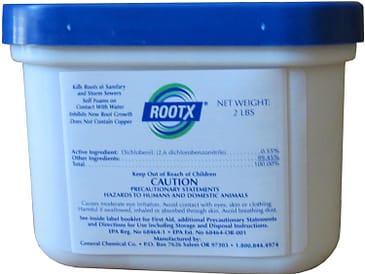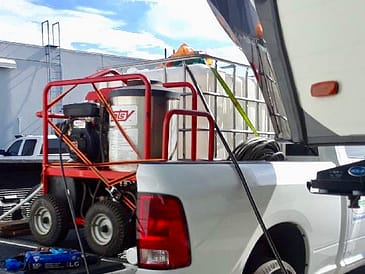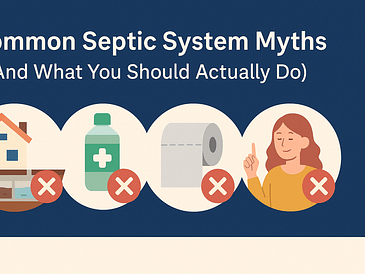Anything New in Septic Tanks: Innovations in Wastewater Management
In the world of home maintenance, septic systems rarely get the spotlight they deserve. Yet, these essential waste management solutions continue to evolve with innovative technologies that improve efficiency, reduce environmental impact, and extend system longevity. Let’s explore the latest advancements in septic tank technology that homeowners should know about.
NextGen Septic Technology: Revolutionary Retrofitting
One of the most significant innovations in septic technology is the NextGen Septic system, which offers a complete rethinking of traditional septic tank functionality. This technology stands out for several key reasons:
Retrofit Capabilities
The NextGen system can be installed on existing approved septic tanks without requiring extensive excavation or tank replacement. This retrofit approach significantly reduces installation costs and property disruption.
“The NextGen Septic technology offers an eco-friendly, efficient solution for domestic wastewater treatment. This system works by retrofitting any approved septic tank, eliminating the need for excavation and tank removal, thus saving the homeowner money.”
Advanced Biological Treatment
The system incorporates specialized NextGen Biomedia and a dedicated Treatment Unit that can be positioned between tank risers or housed in a separate chamber. This technology facilitates simultaneous aerobic and anoxic biological treatment processes that effectively:
- Break down solid waste more completely
- Treat nitrogen compounds that traditional systems struggle with
- Reduce phosphorous content in effluent
“The system is designed to provide full wastewater treatment, breaking down solids and treating nitrogen and phosphorous through simultaneous biological aerobic and anoxic treatment.”
Environmental Benefits
Homeowners who upgrade to NextGen systems often qualify for:
- LEED certification points for sustainable building practices
- Reduced environmental impact through improved wastewater treatment
- Potential water conservation credits in some jurisdictions
“With this type of system, homeowners can benefit from reduced pollution, water savings and LEED points.”
Drip Distribution Systems: Precision Wastewater Application
Drip distribution systems represent another significant advancement in septic technology, offering several advantages over traditional leach fields:
Efficient Space Utilization
These systems use specialized tubing with flow-controlling emitters buried at various depths in the soil. Because they release small amounts of wastewater at regular intervals, they:
- Require less surface area than spray distribution systems
- Can function effectively on properties with challenging soil conditions
- Maximize treatment efficiency while minimizing land use
“Drip systems also release small amounts of wastewater at regular intervals, maximizing the treatment of sewage and minimizing the use of land.”
Reduced Maintenance Requirements
A major benefit for homeowners is that these systems typically don’t require the holding tank to be pumped as frequently as conventional systems.
“A major advantage to homeowners is that these systems don’t require the holding tank to be pumped.”
Controlled Application
Most drip systems include:
- Programmable pumps that control application timing and volume
- Filtration components that remove larger particles before distribution
- Pressure regulation to ensure consistent performance
“A pump typically controls the application and a filter may be included to remove larger particles from the wastewater.”
Plastic Chamber Leach Fields: Modern Alternatives to Gravel
Traditional gravel-based drain fields are increasingly being replaced by engineered plastic chamber systems that offer numerous advantages:
Eco-Friendly Construction
These chambers are typically manufactured from recycled plastic materials, making them an environmentally responsible choice.
“These are engineered from recycled plastic and are designed for strength and performance, making them easy to install.”
Installation Advantages
Compared to conventional pipe and stone systems, plastic chamber leach fields offer:
- Greater design flexibility to accommodate various property configurations
- Easier installation that reduces labor costs
- Lower overall installation expenses
“They have greater design flexibility than pipe & stone systems, and typically cost less to install.”
Performance Benefits
The engineered design of these chambers provides:
- Improved structural integrity and longevity
- Enhanced filtration through the soil-filled chambers
- Potential for up to 40% reduction in required leach field size
“Furthermore, these systems can qualify for a 40% reduction in leach field size compared to pipe & stone systems.”
Advanced Treatment Units (ATUs): Adding Oxygen to the Equation
Advanced septic systems, particularly Aerobic Treatment Units (ATUs), are gaining popularity as regulatory bodies approve these more effective treatment methods:
Aerobic Processing
By introducing oxygen into the wastewater treatment process, ATUs:
- Accelerate the breakdown of organic matter
- Significantly reduce pathogen levels
- Lower nutrient content in the discharged effluent
“ATUs, or aerobic treatment units, are one such treatment method that adds air to the wastewater to break down organic matter and reduce pathogens and nutrients.”
Specialized Systems
Several manufacturers now offer advanced treatment options:
- Orenco’s AdvanTex Treatment Systems provide sustainable processing for residential wastewater
- NextGen Septics’ Advanced Enviro-Septic System accommodates a wide range of applications
- Ecoflo’s biofilter systems are designed with both property protection and environmental sustainability in mind
“Orenco’s AdvanTex Treatment Systems provide environmentally sustainable treatment of residential wastewater flows, while NextGen Septics’ Advanced Enviro-Septic System offers a broad range of applications. Ecoflo’s biofilter is another septic system option that is designed to protect both properties and the environment for the future.”
Nitrogen Conversion
One of the most impressive advancements is the ability of these systems to actively convert ammonia from urine into nitrates, addressing a significant environmental concern with conventional septic designs.
“With advancements in septic tank technology, it is now possible to actively convert ammonia from a person’s urine into nitrates with a conventional septic system design.”
The Challenge of Septic Tank Additives
While technology advances, the regulatory landscape for septic tank additives remains problematic:
Regulatory Gaps
The lack of standardized testing and formal certification for septic tank additives creates challenges:
- Homeowners have difficulty identifying truly effective products
- Claims about additive performance are often unverified
- Some states have banned additives entirely due to concerns about their effects
“Unfortunately, the lack of regulation for septic tank additives leaves homeowners in a difficult position. Without standardized testing and formal certification, it’s hard to know if these products are safe and effective.”
Consumer Guidance
Before purchasing any septic tank additive, homeowners should:
- Research local regulations regarding septic additives
- Consult with certified septic professionals
- Be skeptical of miraculous claims about performance
“In some states, these additives have been banned altogether. It’s important to be aware of the potential risks of using unregulated septic tank additives, and to research local regulations before purchasing any product.”
Cost Considerations for Modern Septic Systems
Understanding the financial implications of various septic technologies is essential for homeowners:
Gravelless Chamber Systems
These modern alternatives typically cost between $4,000 and $10,000, making them:
- More affordable than traditional gravel-based systems in many cases
- A cost-effective option with a life expectancy of up to 30 years
- A good value considering their design flexibility and performance
“When it comes to the cost of gravelless chamber systems, the price can range from $4,000 to $10,000. These types of systems are typically much more affordable than traditional septic tank/drainfield systems that use gravel.”
Installation Factors
The price of any septic system will vary based on:
- Property size and soil conditions
- Local permitting requirements
- Labor costs in your region
- System capacity needs
“The design and size of a gravelless septic system can vary widely, but they are usually installed on native soil and use preassembled units with a perforated drain pipe surrounded by a plastic chamber sidewall. This type of system is also known as a ‘no gravel’ septic system and can have a life expectancy of up to 30 years.”
Constructed Wetland Systems: Nature’s Wastewater Treatment
For environmentally conscious homeowners, constructed wetland systems offer a natural approach to wastewater management:
Natural Filtration
These systems leverage:
- Gravel and sand as filtration media
- Plants that absorb nutrients and support beneficial microorganisms
- Natural biological processes that break down waste
“Constructed wetlands are becoming increasingly popular in urban communities as a sustainable wastewater treatment method. They are part of a wider category of natural treatment systems, and they exploit natural materials such as gravel, sand, and plants.”
Sustainable Benefits
Constructed wetlands provide numerous advantages:
- Promotion of water recycling and reuse
- Creation of habitat for beneficial organisms
- Aesthetic improvement compared to conventional systems
- Minimal energy requirements for operation
“Using onsite constructed wetlands promotes sustainable water management in many ways, as it more easily allows water to be recycled and reused.”
Urban Applications
Increasingly, urban communities are adopting constructed wetlands as sustainable wastewater treatment solutions that:
- Reduce infrastructure demands
- Provide green space
- Offer educational opportunities about ecological processes
“Constructed wetlands have a natural ability to treat wastewater, as water flows slowly through wetlands, with shallow flows and saturated substrates. This study examines the use of constructed wetlands for wastewater treatment, uncovering that they are a viable environmentally-friendly technology.”
Understanding Septic System Functionality
To appreciate the innovations in septic technology, it’s helpful to understand how these systems function:
Basic Operation
All septic systems follow a similar process:
- Collection of wastewater from household plumbing
- Separation of solids and liquids in the tank
- Anaerobic bacterial breakdown of some waste components
- Distribution of effluent to a treatment field
- Final filtration and treatment in the soil
“Septic tanks are designed to collect wastewater from all plumbing fixtures, separate out solid matter and sediment, and allow effluent to flow out into a leach field. Inside the tank, anaerobic bacteria break down some of the waste, while heavy solids settle to the bottom.”
Advanced Components
Modern systems enhance this process with:
- Better separation technologies
- More efficient bacterial treatment
- Improved distribution methods
- Enhanced filtration capabilities
“Once the wastewater reaches the drainfield, it is further treated by natural processes. A plastic chamber leach field or a gravel-less chamber system can be used as a more advanced septic system. These systems rely on drip distribution systems that evenly distribute effluent into the soil, where it is further filtered and treated.”
Weighing the Pros and Cons of Septic Systems
When considering septic system options, homeowners should evaluate several factors:
Advantages
- Cost efficiency compared to municipal sewer connections
- Elimination of monthly water and sewer bills
- Environmental benefits when properly maintained
- Independence from municipal infrastructure issues
“A septic tank tends to be more cost efficient since extensive underground sewer lines are quite costly to build, install and maintain. Additionally, septic systems remove the added expense of a water and sewer bill. They are also considered more environmentally-friendly since a septic tank will not contaminate the water supply.”
Challenges
- Responsibility for maintenance and monitoring
- Potential for problems if not properly maintained
- Need for periodic professional inspections
- Limitations on what can be flushed or drained
- Requirement for pumping every 3-5 years
“However, some things can go wrong with septic systems, especially if they’re not maintained. Leaks, ruptured and clogged pipes, and a flooded drain field can all occur if the system is not taken care of. Additionally, homeowners are responsible for the maintenance of their septic system, including periodic checks from a professional and pumping the solid waste every three to five years.”
Maintaining Your Modern Septic System
Regardless of the technology you choose, proper maintenance remains essential:
Starting a New System
When initiating a new or recently pumped system:
- Fill the tank with clean water
- Consider adding recommended biological starters
- Allow time for bacterial populations to establish
“It is important to note that when starting up a new or pumped out Ri-Industries septic system, the tank should be filled with clean water and a cupful of lime should be added for optimal performance.”
Ongoing Maintenance
For optimal performance:
- Schedule regular inspections (typically costing $75-$250)
- Plan for periodic pumping ($150-$200)
- Practice water conservation
- Be mindful of what enters your system
- Avoid garbage disposals that can overload the system
“Routine inspections, pump outs, and maintenance; Septic tank and drainfield protection; Efficient water use; and Proper waste disposal are important for the long-term health of your system. Average inspection costs are likely to range from $75-$250, plus an additional $150 – $200 if the cesspool needs to be pumped.”
Financial Assistance
Look into Clean Water State Revolving Fund (CWSRF) programs that offer low-interest loans for septic system installation or upgrades.
“Furthermore, it is important to avoid using a garbage disposal as it can easily overload your septic system. Additionally, the CWSRF programs offer low-interest loans to eligible recipients for water infrastructure projects like septic systems.”
Conclusion: The Future of Septic Technology
The septic industry continues to innovate with systems that are more efficient, environmentally friendly, and easier to maintain. For homeowners, these advancements mean:
- More options for challenging properties
- Better environmental performance
- Potentially lower long-term costs
- Improved system longevity
When considering a new septic system or upgrading an existing one, consulting with certified professionals who are familiar with the latest technologies can help you select the option that best meets your specific needs, property conditions, and budget constraints.
“In conclusion, with proper care and maintenance, your septic tank system can last longer.”
By embracing these innovations in septic technology, homeowners can contribute to environmental protection while ensuring reliable, efficient wastewater management for their properties.





